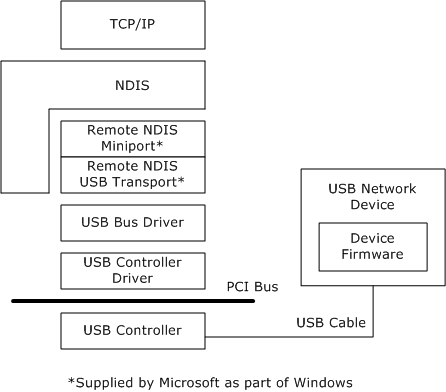There is indeed a generic ID you can use. The USB-IF has reserved Class EF, Subclass 04 to target RNDIS.Windows ships with a generic INF named rndiscmp.inf that matches the hardware ID of 'USB ClassEF&SubClass04&Prot01', which corresponds to RNDIS-over-Ethernet. They are aware of the problems of RNDIS USB network adapters in Windows 10. They are hoping to resolve the problem, Microsoft said. I’ll update you once I have an answer to the issue. I can make Windows to automatically auto-install RNDIS driver once device is connected to Windows host. Not sure if MOD wants this feature.
-->Remote NDIS (RNDIS) eliminates the need for hardware vendors to write an NDIS miniport device driver for a network device attached to the USB bus. Remote NDIS accomplishes this by defining a bus-independent message set and a description of how this message set operates over the USB bus. Because this Remote NDIS interface is standardized, one set of host drivers can support any number of networking devices attached to the USB bus. This significantly reduces the development burden on device manufacturers, improves the overall stability of the system because no new drivers are required, and improves the end-user experience because there are no drivers to install to support a new USB bus-connected network device. Currently Microsoft Windows provides support for Remote NDIS over USB.
Install Rndis Driver Windows 10
The following figure shows the replacement of the device manufacturer's NDIS miniport with the combination of a Remote NDIS miniport driver and a USB transport driver. The device manufacturer can therefore concentrate on device implementation and not have to develop a Windows NDIS device driver.
Microsoft provides an NDIS miniport driver, Rndismp.sys, which implements the Remote NDIS message set and communicates with generic bus transport drivers, which in turn communicate with the appropriate bus driver. This NDIS miniport driver is implemented and maintained by Microsoft and is distributed as part of Windows.
The following Remote NDIS message set mirrors the semantics of the NDIS miniport driver interface:

Driver Rndis Windows 10
Initializing, resetting, and halting device operation
Transmitting and receiving networking data packets
Setting and querying device operational parameters
Indicating media link status and monitoring device status
Microsoft also provides a USB bus transport driver that implements a mechanism for carrying the Remote NDIS messages across the USB bus. This driver transports standardized Remote NDIS messages between the Remote NDIS miniport driver and the bus-specific driver, such as USB. The bus-specific drivers are also required to map any bus-specific requirements, such as power management, into standardized Remote NDIS messages. The transport driver for USB 1.1 and 2.0 is implemented and maintained by Microsoft and distributed as part of Windows.
This structure allows a single device driver to be used for any Remote NDIS device for which there is a bus-specific transport layer. In addition, only one bus transport layer is required for all network devices on a specific bus.
Rndis Windows 10
This section includes the following additional topics:
Rndis6 Drivers Windows 10
Related topics
